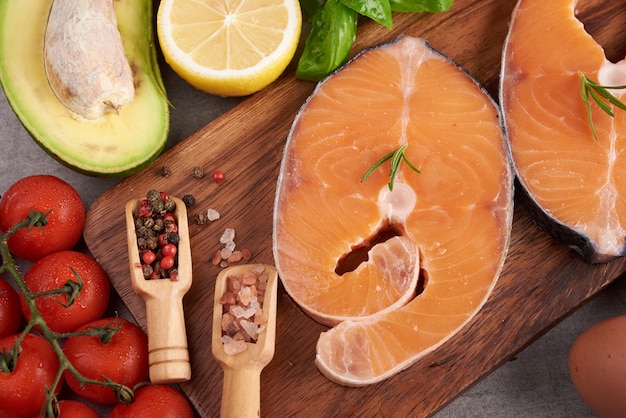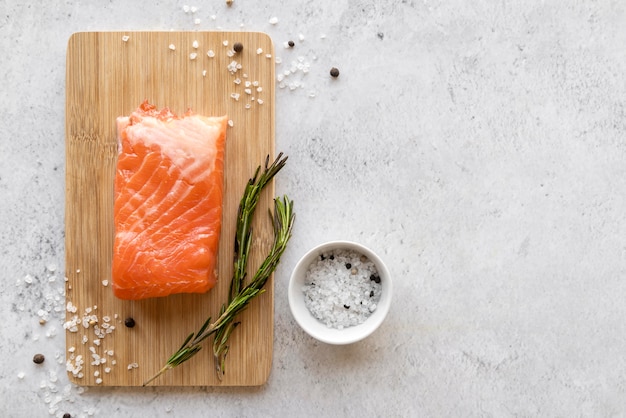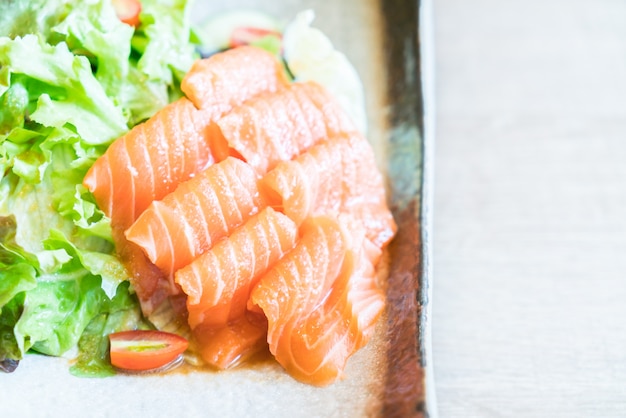Let's face it, we've all been there: staring at a frozen salmon fillet in the freezer, wondering how on earth to make it taste delicious. It's not as intimidating as it seems, trust me! I've been cooking with frozen salmon for years, and I've learned a few tricks that make it a breeze.
In this guide, we'll walk through the process, step-by-step, from defrosting to cooking, to serving. And to make things even easier, I'm sharing two of my favourite salmon recipes – one classic, one with a bit of a kick. So grab your apron, let's get cooking!
Part 1: defrosting frozen salmon – The Key to Success

Defrosting is the most important part of cooking frozen salmon. Get this right, and the rest falls into place. There are a few different ways to defrost, each with its own pros and cons:
1. The Fridge Method: Slow and Steady Wins the Race
This is my preferred method for a couple of reasons. Firstly, it's super easy. Just pop your salmon in the fridge, covered, and let it thaw overnight. Secondly, this slow, steady defrosting ensures the salmon defrosts evenly, preventing mushiness.
2. Cold water bath: For When You're Short on Time
If you need your salmon defrosted in a hurry, a cold water bath can speed things up.
- Place the frozen salmon in a sealed bag, making sure it's completely submerged in cold water.
- Change the water every 30 minutes or so. The colder the water, the quicker the defrosting process.
- You'll typically need about 30 minutes per pound of salmon.
3. Microwave Defrosting: The Last Resort
I'm not a huge fan of microwave defrosting for salmon. It tends to cook the outside while the inside is still frozen. But if you're in a real pinch, it can work.
- Place the salmon on a microwave-safe plate.
- Defrost on a low setting, checking every 30 seconds to avoid overcooking.
Part 2: Assessing Your Salmon – Quality Control

Now that your salmon is defrosted, it's time to take a good look at it to ensure it's fresh and ready for cooking.
The Smell Test:
Fresh salmon has a mild, slightly sweet smell. If it smells fishy, ammonia-like, or overly strong, it's best to toss it.
The Appearance Check:
Look for a firm, springy texture. The flesh should have a nice, even colour – pink, orange, or red, depending on the type of salmon. Avoid any discolouration or mushiness.
The Finger Test:
Gently press your finger on the salmon. It should bounce back slightly, indicating freshness. If it leaves an indentation, the salmon might be past its prime.
Removing the Skin (Optional):
Sometimes I leave the skin on, but if you prefer to remove it, here's a quick method:
- Grab a sharp knife and run it along the underside of the skin, cutting through the membrane.
- Gently lift the skin from the salmon and peel it off.
Part 3: Choosing Your Cooking Method – Finding Your Perfect Match

The fun part! There are a ton of ways to cook salmon, each bringing its own unique flavour and texture. Here are some of my go-to methods:
1. Baking: The Classic Choice
Baking is simple, reliable, and produces consistently delicious results.
- Preheat your oven to 375°F (190°C).
- Line a baking sheet with parchment paper for easy cleanup.
- Season the salmon with salt, pepper, and your favourite herbs or spices (lemon and dill is a personal favourite!).
- Bake for 15-20 minutes, or until the flesh flakes easily with a fork.
2. Pan-Frying: Quick and Flavorful
Pan-frying is perfect for a quick weeknight meal.
- Heat a little oil in a nonstick pan over medium-high heat.
- Season the salmon with salt, pepper, and your choice of spices.
- Cook for 3-4 minutes per side, or until the salmon is cooked through and has a nice golden brown crust.
3. Grilling: Outdoor Flavor
If you've got a barbecue, grilling adds a delightful smoky flavour to salmon.
- Preheat your grill to medium-high heat.
- Brush the salmon with a little oil and season it with your favourite spices.
- Grill for 3-4 minutes per side, or until cooked through.
Part 4: Don't Overcook Your Salmon – The Importance of Doneness
overcooked salmon is dry, crumbly, and frankly, not enjoyable. Here's how to ensure your salmon stays juicy and delicious:
1. Using a meat thermometer: The Most Accurate Method
The most reliable way to check if your salmon is cooked is to use a meat thermometer.
- Insert the thermometer into the thickest part of the salmon, making sure it doesn't touch any bones.
- Cook until the internal temperature reaches 145°F (63°C).
2. Checking for Doneness Without a Thermometer:
If you don't have a thermometer, here are a few visual clues:
- The Flesh: The flesh should be opaque, not translucent, and flake easily with a fork.
- The Colour: The salmon will have turned from translucent to a light pink or white colour.
3. Resting Your Salmon: A Crucial Step
Once your salmon is cooked, let it rest for a few minutes before serving. This allows the juices to redistribute, resulting in a juicier, more flavourful piece of salmon.
- Transfer the salmon to a plate and cover it with foil.
- Let it rest for 5-10 minutes.
Part 5: Recipe Time! Two Easy, Delicious Options
Let's put those skills into practice. Here are two recipes – one simple and classic, the other a bit more adventurous:
1. Lemon and Dill baked salmon: A Classic for a Reason
This recipe is a crowd-pleaser, combining the fresh flavour of lemon with the earthy aroma of dill.
Ingredients
1 pound skin-on salmon fillet
1 tablespoon olive oil
1 lemon, thinly sliced
1 tablespoon fresh dill, chopped
Salt and pepper to taste
Instructions
1. Preheat your oven to 375°F (190°C).
2. Line a baking sheet with parchment paper.
3. Place the salmon on the baking sheet.
4. Drizzle the salmon with olive oil and season with salt and pepper.
5. Arrange the lemon slices on top of the salmon.
6. Sprinkle with fresh dill.
7. Bake for 15-20 minutes, or until the salmon is cooked through.
2. Spicy honey-glazed salmon: A Sweet and Spicy Treat
This recipe is a bit more exciting, featuring a tangy, sweet, and spicy glaze that adds a touch of complexity to the salmon.
Ingredients
1 pound skin-on salmon fillet
1 tablespoon olive oil
1/4 cup honey
1 tablespoon soy sauce
1 tablespoon sriracha sauce
1 teaspoon ginger, minced
1/2 teaspoon garlic, minced
Sesame seeds for garnish
Instructions
1. Preheat your oven to 375°F (190°C).
2. Line a baking sheet with parchment paper.
3. Place the salmon on the baking sheet.
4. In a small bowl, whisk together the honey, soy sauce, sriracha sauce, ginger, and garlic.
5. Drizzle the glaze over the salmon.
6. Bake for 15-20 minutes, or until the salmon is cooked through.
7. Sprinkle with sesame seeds before serving.
Part 6: Serving Your Salmon – Making it a Meal
Your salmon is cooked to perfection, now let's turn it into a complete meal.
side dish Pairings:
Salmon pairs beautifully with a variety of sides.
- Roasted Vegetables: Asparagus, broccoli, Brussels sprouts, or bell peppers.
- Green Salad: With a light vinaigrette or creamy dressing.
- Rice or Quinoa: A simple and healthy accompaniment.
- Pasta: Tossed with a light tomato sauce or pesto.
Finishing Touches:
A few finishing touches can elevate your salmon dish from good to great:
- Fresh Herbs: Chopped dill, parsley, or chives add a burst of flavour.
- Lemon Wedges: Squeeze a bit of lemon juice over your salmon for a zesty kick.
- Butter: A pat of butter on top of the salmon will melt and create a rich, creamy sauce.
Part 7: leftover salmon: Don't Waste a Bite!
Leftover salmon? No problem!
Storing Leftovers:
- Refrigerate your leftover salmon in an airtight container for up to 3 days.
Ways to Use Leftovers:
- Salmon Salad: Flake the salmon and add it to a salad with your favourite ingredients, like chopped celery, onion, and mayonnaise.
- Salmon Sandwiches: Spread some cream cheese or hummus on bread and top with flaked salmon, lettuce, and tomato.
- Salmon Pasta: Add the flaked salmon to your favourite pasta dish, like a creamy salmon pasta sauce.
Part 8: FAQs
Let's address some common questions about cooking frozen salmon:
1. Can I Cook Frozen Salmon Directly?
It's not recommended. Frozen salmon is denser than thawed salmon, which means it takes longer to cook and might not cook evenly. Defrosting is always best.
2. Can I Freeze Cooked Salmon?
Yes, but it's best to freeze it before adding any sauces or toppings. It will last in the freezer for up to 3 months.
3. What is the Best Type of Salmon to Use?
It depends on your taste! Here are some popular options:
atlantic salmon: The most common, with a mild flavour.
sockeye salmon: Rich, deep flavour.
chinook salmon: Buttery flavour.
4. How Do I Know if My Salmon is Bad?
If your salmon smells fishy or ammonia-like, it's gone bad. The flesh should also be firm and springy, not mushy or slimy.
5. What are the Health Benefits of Salmon?
Salmon is a powerhouse of nutrients. It's a great source of protein, omega-3 fatty acids, vitamin D, potassium, selenium, and B vitamins.
Part 9: Final Thoughts
There you have it – everything you need to know to cook frozen salmon like a pro. It's all about the defrosting, choosing the right cooking method, and knowing how to judge doneness. Don't be afraid to experiment with different recipes and flavours.
Everyone is watching

Corn on the Cob: The Ultimate Guide to Perfectly Cooked Ears
Healthy MealsAh, corn on the cob. Just the name evokes images of sunny days, barbecues, and that sweet, juicy flavour that ...

Perfect Pork Roast Oven Cooking Time: A Guide to Delicious Results
Healthy MealsThere's something truly satisfying about a perfectly roasted pork. The aroma alone is enough to make your mout...

Ham Cooking Time: How Long to Bake, Smoke, or Boil a Delicious Ham
Healthy MealsAh, ham. It's a classic, isn't it? A real crowd-pleaser, especially around holidays. And when done right, it'...

Scallops: The Ultimate Guide to Perfect Cooking
Healthy MealsAh, scallops. Those delicate, sweet, and utterly delicious morsels of the sea. They hold a special place in my...

Spaghetti Squash: The Ultimate Guide to Cooking and Serving
Healthy MealsRemember that time you saw spaghetti squash at the supermarket, looking all bumpy and strange, and thought, "W...
